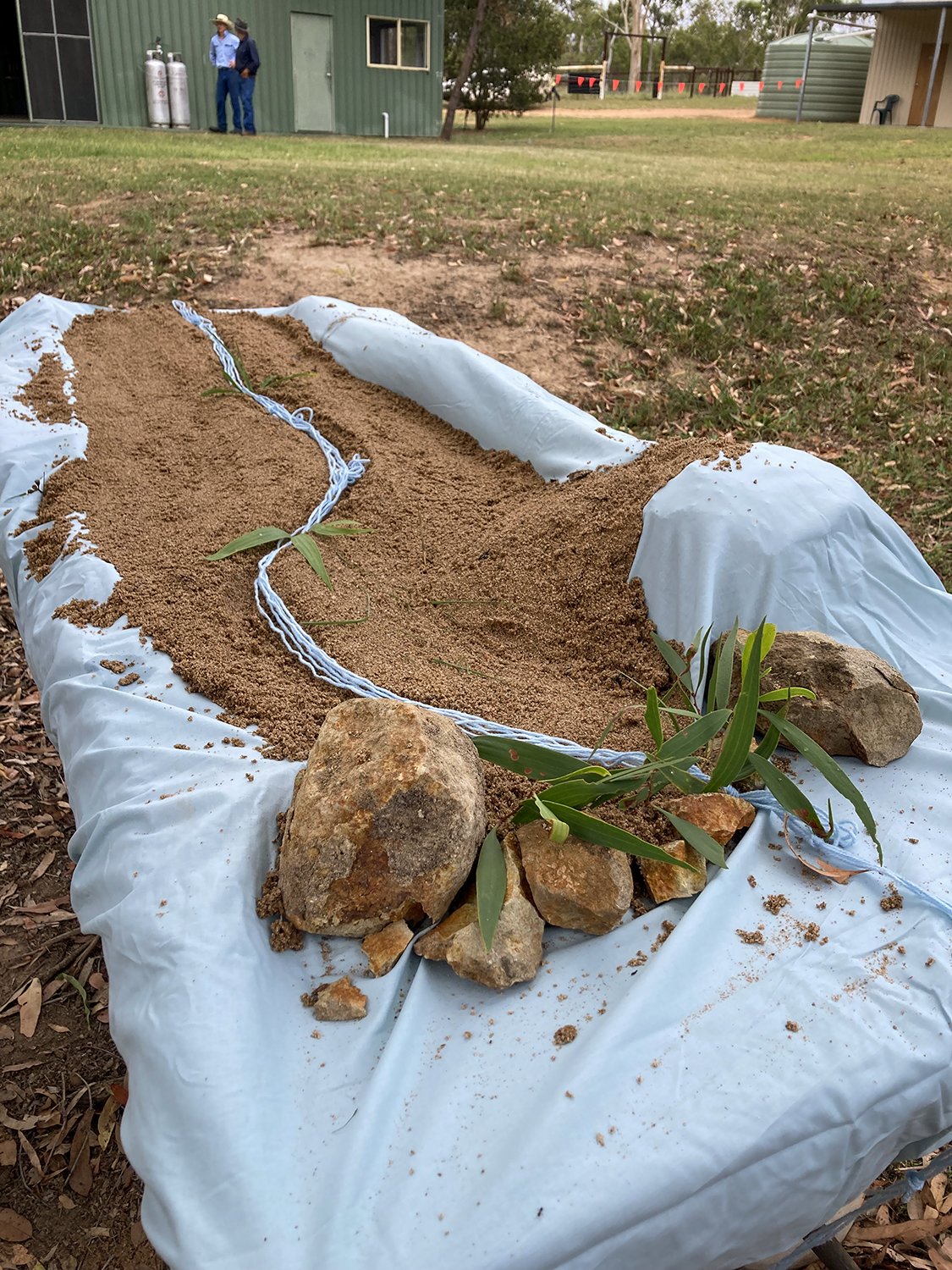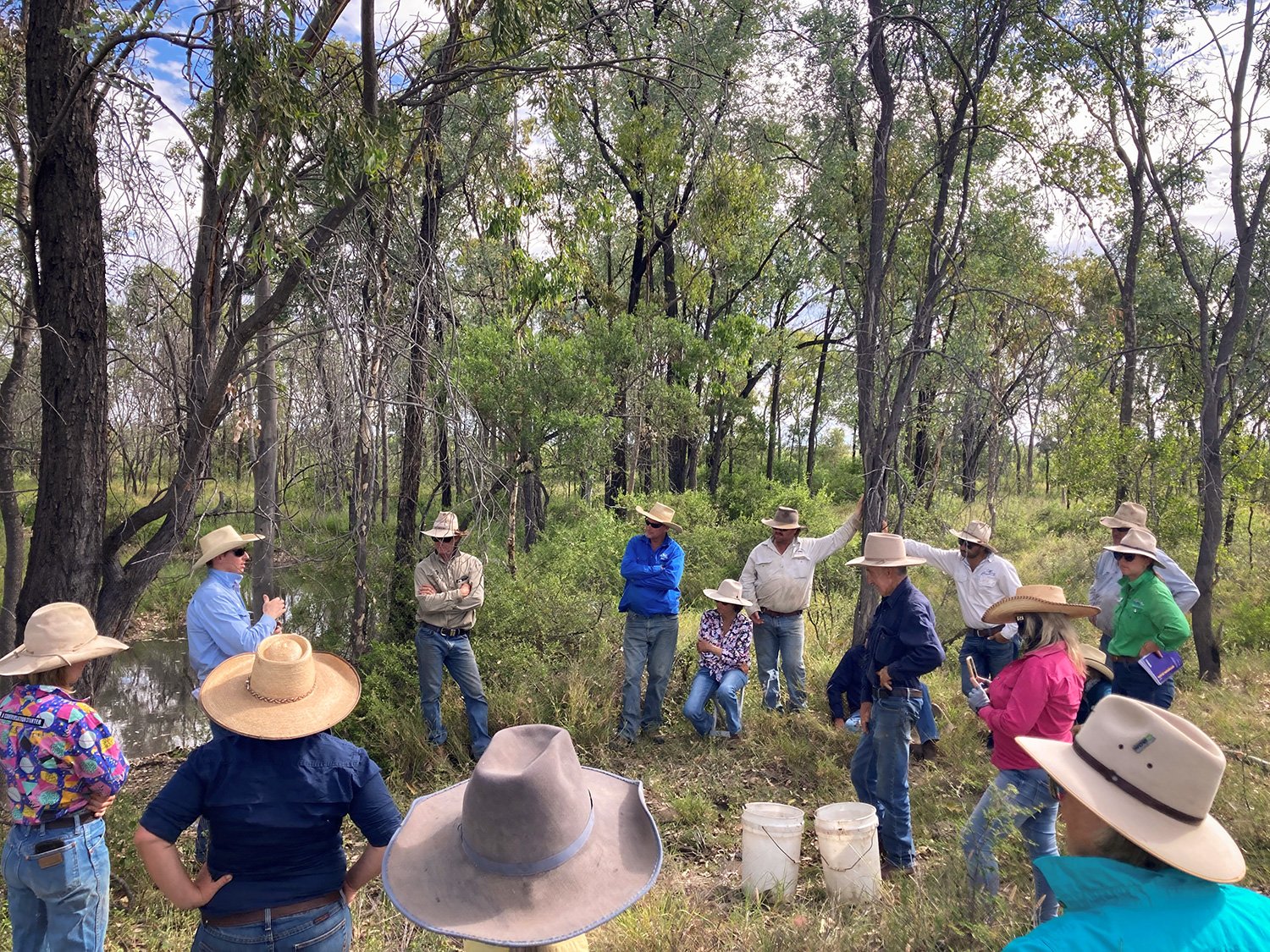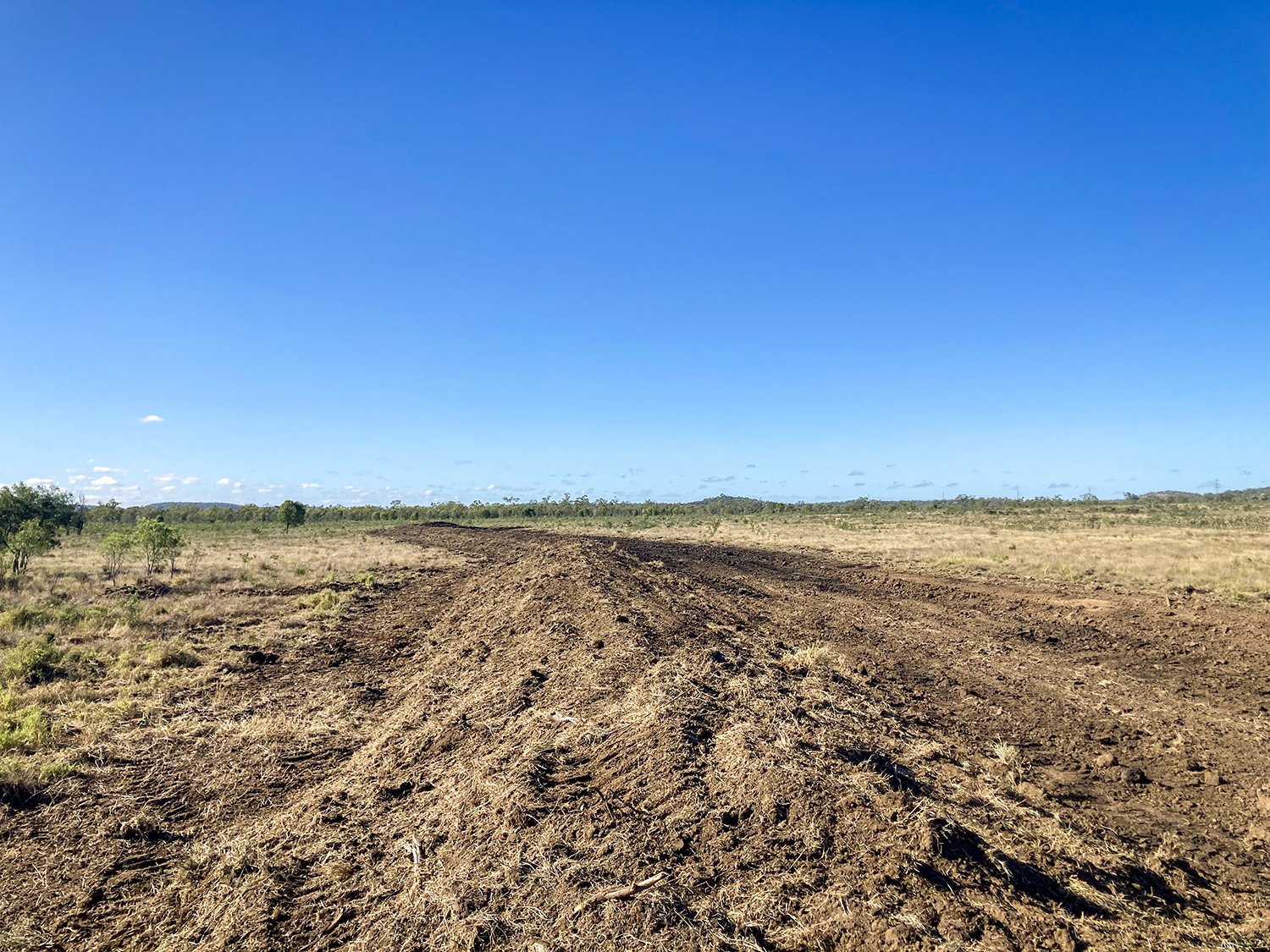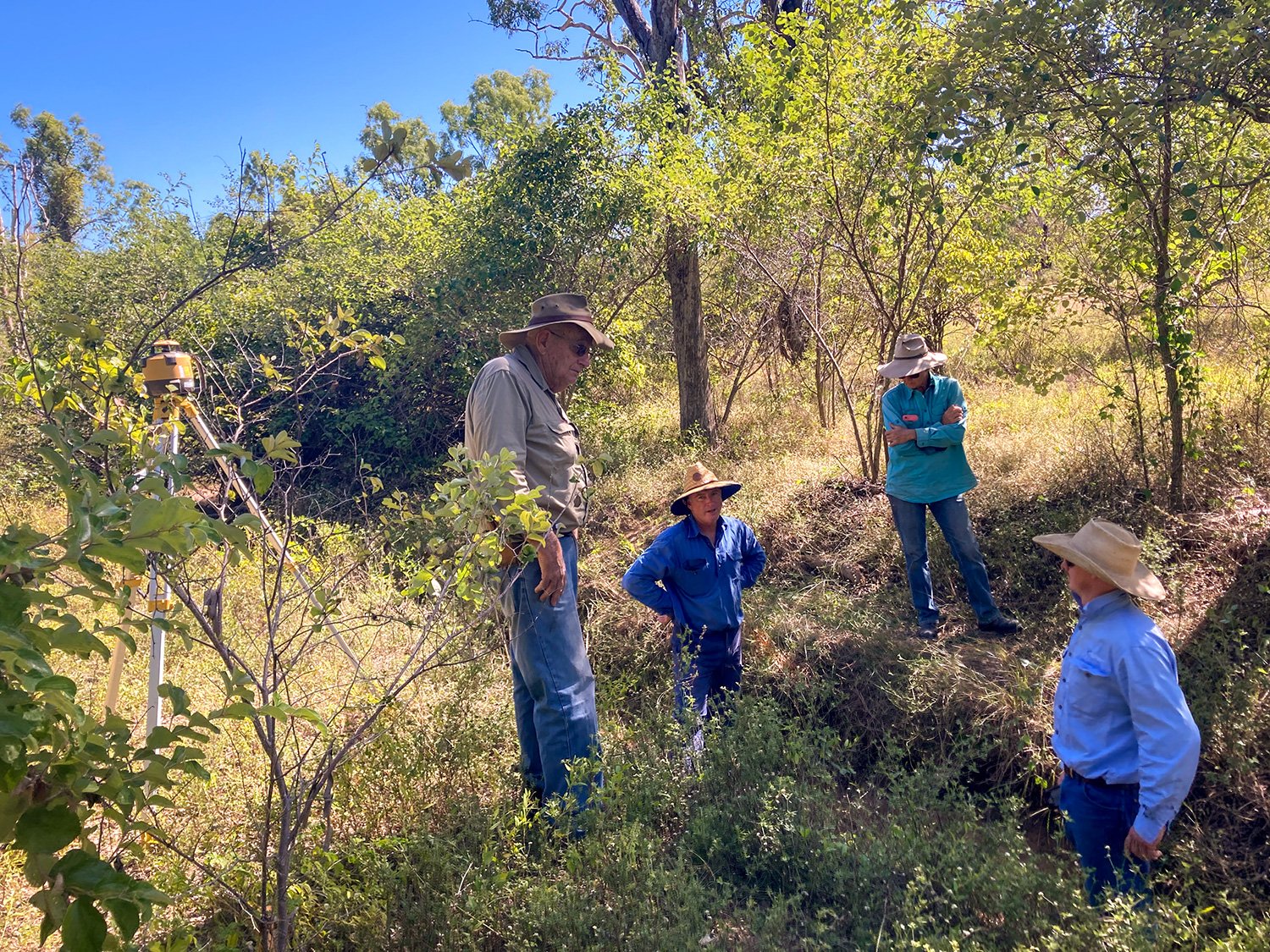The Queensland team have finished off the year delivering workshops and putting the finishing touches on large-scale construction projects.
Workshops
Sam Skeat (Regenerative Agriculture Consultant) and Joe Skuse (Landscape Planner) have recently run workshops for Terrain NRM in the Herbert River catchment in Queensland’s wet tropics, and for CHRRUP at a location 70km west of Emerald in Central Queensland.
At both the workshops, they were able to trial new activities developed by our education team and despite the differences in climate and landscape, Sam and Joe covered the same foundational topics of understanding how the landscape was built, how it was degraded and what we can do to fix it.
Aiding the workshops was a new landscape model activity that visually explains the patterns and processes that we work with in landscape rehydration.
In the afternoon, both groups spent a few hours moving through the landscape on a property tour. Information shared in the morning session was transferred from the model to the landscape-scale, where participants were presented with real life examples of landscape building, degradation and repair.
A key message of the day was that managing plants and animals is the biggest driver for positive landscape change. Participants were encouraged to think about how they would prioritise landscape rehydration work on their property in reference to their own lifestyle, business and landscape.
These workshops were paid for and delivered separately on behalf of Terrain NRM and CHRRUP.
Right: Landscape rehydration workshop for CHRRUP in Central Queensland.
Left: Landscape model activity explaining how landscapes are built and degraded.
Weetalaba Station
Construction has also finished up at Weetalaba Station, 50 km south of Collinsville.
This project showcases how landscape rehydration works can be used to reduce the amount of sediment reaching the Great Barrier Reef, while achieving the co-benefits of increased soil moisture, improved biodiversity and increased agricultural productivity. Flows have been directed out of an actively eroding gully system back to soil surface. Plants are cycling the water as well as the nutrients transported in the sediment, which means the agricultural landscape has better infiltration and soil moisture.
This project is funded by NQ Dry Tropics through the Great Barrier Reef Foundation.
Right: Rock chute at Weetalaba.
Left: Contour bank at Weetalaba.
Lansdown Catchment Rehydration Initiative
As the year comes to a close, the team are also reflecting on the successes of the Lansdown Catchment Rehydration Initiative (LCRI).
The LCRI has worked to build drought resilience in the Lansdown Creek community through capacity building in landscape rehydration works.
Sam and Joe have had the privilege of working with a passionate group of landholders who are driven to make positive changes for their landscape and business.
These workshops was supported by NQ Dry Tropics and the Mulloon Institute, through funding from the Australian Government’s Future Drought Fund.
Above: Working with landholders Ty, Troy and Jodene Green to build a leaky weir in an eroded flow line as part of the LCRI.




